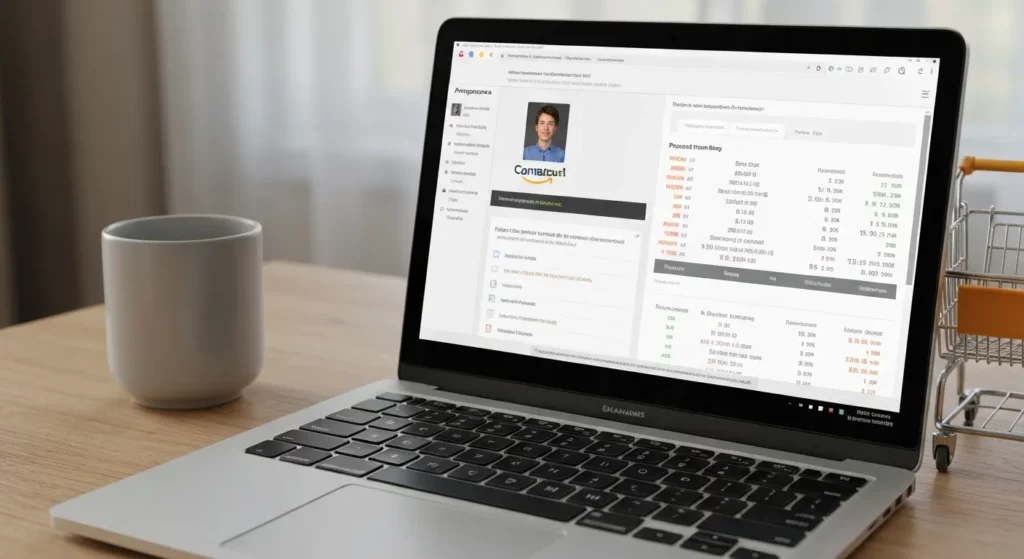We’ve all been there. You finally buy that new coffee maker or television you’ve been eyeing for months. You get it home, set it up, and feel a sense of satisfaction. Then, a week later, you see the exact same item advertised for 30% off. That feeling of satisfaction quickly turns into frustration. It’s a common experience, but it doesn’t have to be yours.
Welcome to your complete guide on mastering the art of strategic waiting. This isn’t about depriving yourself of the things you want and need. Instead, it’s about empowering you with the knowledge to decide when to buy, ensuring you get the best possible price. For many of us, especially those on a more fixed budget, making our money go further is a top priority. A little bit of patience and planning can lead to significant savings, freeing up funds for other important things, like a vacation, a hobby, or spoiling the grandkids.
In this guide, we’ll walk you through everything you need to know. We’ll transform you from a hopeful shopper into a savvy strategist. You’ll learn how to identify the perfect time to purchase everything from electronics to furniture, how to use simple online tools to your advantage, and how to spot a truly great deal from a marketing gimmick. By the end, you’ll have the confidence to know when to pull out your wallet and, just as importantly, when to say, “Not yet.”
What You’ll Need: Your Smart Shopper’s Toolkit
Before we dive into the step-by-step process, let’s gather our tools. The good news is you don’t need anything fancy or expensive. The most important resources are a shift in mindset and a few simple digital helpers.
- A Healthy Dose of Patience: This is your most powerful tool. The ability to wait for the right moment is the foundation of getting a great deal.
- A Wish List: Don’t wait until your toaster breaks to start looking for a new one. Keep a running list of items you’d like to purchase in the future. This gives you time to research and watch for sales without the pressure of an urgent need.
- A Clear Budget: Know exactly how much you are willing to spend on an item. This prevents you from overspending, even when you find a “good” sale. A budget is your financial guardrail.
- Access to the Internet: The internet is your gateway to research, price comparisons, and reviews. A smartphone, tablet, or computer is all you need.
- An Email Address: This is essential for signing up for newsletters and price alerts that will notify you when it’s the right time to buy. Consider creating a separate email address just for shopping to keep your primary inbox tidy.
- A Critical Eye: It’s important to remember that retailers want your business. Not every “limited-time offer” is a genuine bargain. We’ll teach you how to tell the difference.
Your Step-by-Step Guide to Perfect Purchase Timing
Ready to start saving? Follow these steps to become a master of timing your purchases. We’ve broken the process down into simple, manageable actions that anyone can follow.
Step 1: Separate Your Needs from Your Wants
The very first step is to understand the urgency of your purchase. This will dictate your entire strategy. Grab a piece of paper or open a note on your device and categorize your potential purchases.
- Needs (Urgent): These are items you can’t go without. A broken refrigerator, a dead car battery, or essential medical equipment fall into this category. With these items, you have less time to wait. The goal is to find the best possible price right now.
- Wants (Can Wait): These are planned purchases and upgrades. This could be a larger TV for the living room, a new laptop to better video chat with family, a more comfortable recliner, or a birthday gift you’re planning to buy in a few months. These are the items where patience will yield the biggest rewards.
For the rest of this guide, we will focus primarily on the “Wants” category, as this is where strategic waiting truly shines.
Step 2: Become a Product Expert (Before You Look at the Price)
Never start by searching for a “cheap TV.” You might end up with a low-quality product that doesn’t last. Instead, start by researching the product itself. Your goal is to decide on one or two specific models that meet your standards before you start hunting for deals.
- Read Professional Reviews: Look at websites like Consumer Reports. They provide unbiased, in-depth reviews and testing on thousands of products. Many local libraries offer free online access to their database.
- Read User Reviews: Check the reviews on major retailer sites like Amazon, Best Buy, or Home Depot. Pay attention to reviews that discuss long-term reliability, not just initial impressions. Look for patterns in what people praise or complain about.
- Identify Key Features: What do you absolutely need? For a laptop, is it a backlit keyboard or a large screen? For a washing machine, is it a specific capacity or a steam cycle? Make a list of your “must-have” features.
Once you have a specific model in mind (e.g., the “Samsung Model XYZ 55-inch TV” or the “KitchenAid Model ABC Stand Mixer”), you can move on to the next step: hunting for the best price.
Step 3: Understand the Annual Sales Cycle
Most products follow a predictable pricing pattern throughout the year. Retailers discount items at specific times to clear out old inventory and make room for new models. Knowing this calendar is like having an insider’s guide to shopping.
Electronics (TVs, Laptops, Cameras)
- Best Time: November (Black Friday/Cyber Monday) and January/February.
- Why: November offers the year’s biggest doorbuster deals. After the giant Consumer Electronics Show (CES) in January, manufacturers announce their new models. Retailers then slash prices on the previous year’s models in late January and February to clear shelves. For TVs specifically, the weeks leading up to the Super Bowl are also a prime time for sales.
Major Appliances (Refrigerators, Washers, Dryers, Dishwashers)
- Best Time: September, October, and May.
- Why: New models are typically released in the fall. Therefore, stores need to get rid of last year’s inventory in September and October. May is another hot spot due to Memorial Day sales, a major event for home appliance discounts. Holiday weekends like Labor Day and Presidents’ Day are also excellent times to check for deals.
Furniture
- Best Time: January and July.
- Why: Furniture stores operate on a biannual schedule. New styles are introduced in February and August. To make room, retailers clear out old floor models and inventory in the months just before—January and July. This is the perfect time to snag a deal on a sofa, dining set, or bedroom suite.
Mattresses
- Best Time: Holiday Weekends, especially Memorial Day.
- Why: You’ve seen the commercials. Mattress companies love three-day weekends. Memorial Day, the Fourth of July, and Labor Day consistently offer the steepest discounts of the year.
Linens (Sheets, Towels)
- Best Time: January.
- Why: This tradition dates back to the 1800s. Department stores started holding “White Sales” in January to boost sales after the holiday rush. The tradition continues today, making it the best month to buy new bedding and bath towels.
Cars
- Best Time: August through October, and the end of the month/year.
- Why: New model years typically roll onto dealership lots in the late summer and early fall. This makes dealers eager to sell the “old” models still on their property. Additionally, salespeople have monthly, quarterly, and yearly sales quotas to meet. Shopping in the last few days of December can yield fantastic bargains as they rush to hit their annual goals.
Step 4: Let Technology Do the Waiting for You (Set Up Price Trackers)
You don’t have to manually check a website every day for a price drop. You can set up free, automated alerts that will email you when an item’s price hits your target. This is one of the most effective strategies for smart shopping.
What is a price tracker? It’s a website or browser extension that monitors the price of an item over time at various retailers. It shows you the item’s price history, so you can see if the current “sale” price is actually a good deal.
Recommended Tools:
- Google Shopping: One of the easiest to use. Simply search for your product on Google. On the Shopping tab, you’ll often see a “Track price” button with a little bell icon. Click it, and Google will email you when the price drops.
- CamelCamelCamel: This is a must-have for anyone who shops on Amazon. It shows you the complete price history of almost any product on Amazon, so you can see its highest and lowest prices ever. You can also set an alert to be notified when it drops to a price you’re willing to pay.
How to Use a Price Tracker (Example with CamelCamelCamel):
- Find the product you want on Amazon.com.
- Copy the web address (URL) from the top of your browser.
- Go to the website camelcamelcamel.com.
- Paste the Amazon link into the search box on their homepage and press Enter.
- You will now see a graph showing the product’s price history. This instantly tells you if today’s price is high or low compared to the past.
- Below the graph, you can create a price watch. Enter your “desired price” in the box and provide your email address.
- Click “Start Tracking.” That’s it! CamelCamelCamel will now watch the item for you and send you an alert when the price drops to your target level.
Step 5: Get on the Inside Track with Newsletters and Loyalty Programs
Retailers often reward their most loyal customers. By signing up for their free programs, you can gain access to deals that the general public never sees.
- Email Newsletters: Go to the websites of your favorite stores (like Kohl’s, Macy’s, Best Buy, etc.) and sign up for their email list. They will send you coupons, notifications of upcoming sales, and sometimes special offers just for subscribers. Tip: As mentioned earlier, use a separate email address for these subscriptions to keep your main inbox from getting cluttered.
- Loyalty Programs: If a store you frequent offers a free loyalty or rewards program, join it. You can earn points on purchases that translate into future discounts. Members often get early access to major sales events like Black Friday.
Step 6: Hunt for “Hidden” Discounts
The price you see on the tag isn’t always the lowest price you can pay. There are often other ways to reduce the cost.
- Senior Discounts: Always ask! Many stores, from pharmacies to grocery stores to retailers, offer a senior discount, often on a specific day of the week. Organizations like AARP also provide a wide range of discounts. It never hurts to inquire, “Do you offer a senior discount?”
- Open-Box or Floor Models: These are items that were returned by a customer (often unused) or were on display in the store. They are typically in perfect working condition but cannot be sold as “new.” They come with a full warranty and a significant discount. Ask a store employee if they have any open-box deals available for the product you want.
- Refurbished Items: These are products that were returned due to a minor defect, have been professionally repaired by the manufacturer, and are certified to be in perfect working order. Buying directly from the manufacturer (e.g., Apple’s Certified Refurbished store) is very safe and can save you hundreds of dollars.
- Price Matching: Many large retailers (like Target, Best Buy, and Walmart) have a price match policy. If you find an identical item for a lower price at a competitor’s store, they will match it. Simply show them the ad or webpage on your phone at the customer service desk.
Step 7: Know When to Pounce
You’ve done your research, tracked the price, and now you’ve received that exciting price drop alert. It’s time to make the final call.
- Review the Price History: Quickly check your price tracker again. Is this new price an all-time low or close to it? If so, it’s very likely the right time to buy.
- Consider Your Timeline: How soon do you need the item? If a major sales holiday like Black Friday is just a few weeks away, you might want to wait a little longer to see if the price drops even more. If it’s months away, this might be the best deal you’ll see for a while.
- Trust Your Research: You’ve put in the work. You know the product is good, and you know the price is right. Act with confidence and make your purchase. Enjoy the fruits of your patient labor!
Tips for Success: Best Practices for Smart Shoppers
- Use the 24-Hour Rule: To combat impulse buying, if you see an unplanned item you want, wait 24 hours before purchasing it. This cooling-off period helps you decide if you truly want it or if it was just a fleeting desire.
- Be Wary of “Dynamic Pricing”: Online retailers sometimes show different prices to different people based on their location or browsing history. To see the most neutral price, try shopping in a “private” or “incognito” browser window.
- Always Read the Fine Print: Before you click “buy,” check the store’s return policy. What if the item arrives damaged or isn’t what you expected? Also, check the warranty information, especially for electronics and appliances.
- Factor in Shipping: A fantastic deal can be quickly soured by high shipping costs. Always check the final price, including shipping and taxes, before you commit. Look for free shipping offers.
- Don’t Let It Become a Chore: The goal is to save significant money on meaningful purchases, not to stress over saving 50 cents on a bag of coffee. Find a healthy balance. Focus your energy on big-ticket items where your savings will be most substantial.
Troubleshooting and Frequently Asked Questions (FAQs)
“What if I need something urgently and can’t wait for a sale?”
This happens to everyone. If your washing machine floods the laundry room, you can’t wait until Memorial Day. In these situations, your goal shifts from “finding the absolute lowest price” to “finding the best available price right now.” Use your research on the best models, then quickly compare prices at a few local and online stores. Don’t forget to ask about price matching and see if they have any open-box models in stock.
“Is buying a refurbished item really safe?”
It can be very safe if you buy from a reputable source. There’s a big difference between “used” (sold as-is by an individual) and “manufacturer-refurbished.” A refurbished product has been inspected, repaired, and certified by the original maker to meet its quality standards. It almost always comes with a warranty. For electronics like laptops and phones, buying refurbished directly from Apple, Dell, or another manufacturer is a fantastic and reliable way to save money.
“The price dropped right after I bought it! Can I do anything?”
Yes, you often can! Many stores have a price protection or price adjustment policy. If an item you bought goes on sale within a certain period (usually 14 to 30 days), they will refund you the difference. Keep your receipt, and if you see a price drop, just take it back to the customer service desk and ask for a price adjustment. Some credit cards also offer this as a built-in benefit, so check your card’s terms.
“How do I know if a ‘50% Off!’ sale is actually a good deal?”
This is where your price tracker research is invaluable. Some retailers inflate the “original” price to make a discount seem larger than it is. By checking a tool like CamelCamelCamel, you can see what the item has *actually* been selling for over the past year. If the 50% off price is the lowest it has ever been, it’s a great deal. If it’s a price the item sells for frequently, the “50% Off” banner is just marketing noise.
Conclusion: The Power Is in Your Hands
Mastering the art of purchase timing is one of the most practical skills you can develop to protect your finances and make your money work smarter. It’s not about endless waiting or missing out; it’s about making deliberate, informed choices.
By understanding the difference between needs and wants, doing your homework on products, learning the annual sales calendar, and using simple tools to track prices, you shift the power from the retailer to yourself. You are no longer a passive consumer but an active, empowered strategist.
Embrace patience as your ally. Celebrate the savings you earn through your planning. Every dollar you save on a planned purchase is a dollar you can put toward something else you value. With these steps and tips, you have everything you need to shop with confidence and secure the best deal, every time. Happy saving!














